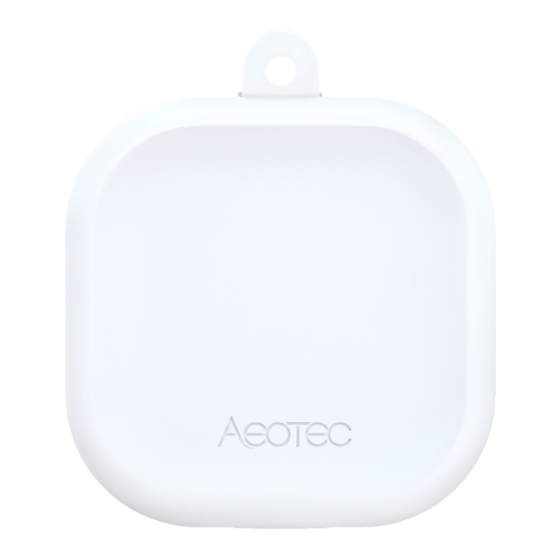
Table of Contents
Advertisement
Quick Links
Advertisement
Table of Contents

Subscribe to Our Youtube Channel
Summary of Contents for Aeon Labs Aeotec Repeater
- Page 1 Repeater...
-
Page 2: Table Of Contents
Guide Contents Aeotec Repeater Familiarise yourself with your Repeater Quick Start If you’re using a Z-Stick If you’re using a Minimote Advanced Functions If you’re using a Z-Stick If you’re using a Minimote Warranty... -
Page 3: Aeotec Repeater
1 Aeotec Repeater Aeotec Repeater can be used as a Z-Wave network repeater. 2 Familiarise yourself with your repeater Placed Repeater to the right position, it can work well. Product use Instruction Fixing holes Switch Outlet Repeater... -
Page 4: Quick Start
Quick Start Getting your Aeotec Repeater up and running is as simple as plugging it into a wall outlet and linking it to your existing Z-Wave network. The following instructions tell you how to link your Repeater to your Z-Wave network using Aeotec's Z-Stick or Minimote controllers. -
Page 5: If You're Using A Minimote
If you’re using a Minimote: Decide on where you want your Repeater to be placed and plug it in. Its main light will begin to blink. Take your Minimote to your Repeater. Press the Include on your Minimote. Press the Action Button on your Repeater. If your Repeater has been successfully linked to your network, its light will no longer blink. -
Page 6: Advanced Functions
4 Advanced Functions Removing your Repeater from a Z-Wave network Your Repeater can be removed from your Z-Wave network at any time. You'll need to use your Z-Wave network's main controller to do this. The following instructions tell you how to do this using Aeotec's Z-Stick and Minimote controllers. -
Page 7: If You're Using A Minimote
If you’re using a Minimote: Take your Minimote to your Repeater. Press the Remove Button on your Minimote. Press the Action Button on your Repeater. If your Repeater has been successfully removed from your network, its light will blink. If the removal was unsuccessful its light will not blink. -
Page 8: Warranty
Customer. Warranty claims must be made by Customer in writing within thirty (30) days of the manifestation of a problem. Aeon Labs' sole obligation under the foregoing warranty is, at Aeon Labs' option, to repair, replace or correct any such defect that was present at the time of delivery, or to remove the Products and to refund the purchase price to Customer. - Page 9 Aeon Labs does not authorize any person or party to assume or create for it any other obligation or liability in connection with the Products except as set forth herein. Aeon Labs will pass on to Customer all manufacturers’ Material warranties to the extent that they are transferable, but will not independently warrant any Material.
- Page 10 Aeon Labs’ manufacturing processes. IN NO EVENT SHALL AEON LABS BE LIABLE FOR ANY INDIRECT,...
- Page 11 THE INDEMNITY AND WARRANTY IN ABOVE ARE EXCLUSIVE AND IN LIEU OF ALL OTHER INDEMNITIES OR WARRANTIES, WHETHER EXPRESS OR IMPLIED, INCLUDING THE IMPLIED WARRANTIES OF MERCHANTABILITY AND FITNESS FOR A PARTICULAR PURPOSE. FCC NOTICE (for USA): THE MANUFACTURER IS NOT RESPONSIBLE FOR ANY RADIO OR TV INTERFERENCE CAUSED BY UNAUTHORIZED MODIFICATIONS TO THIS EQUIPMENT.
- Page 12 However, there is no guarantee that interference will not occur in a particular installation. If this equipment does cause harmful interference to radio or television reception, which can be determined by turning the equipment off and on, the user is encouraged to try to correct the interference by one or more of the following measures: Reorient or relocate the receiving antenna.
- Page 13 Certifications (regional): www.aeon-labs.com www.aeotec.com Version:14A0010038-AA...
- Page 14 FCC STATEMENT 1. This device complies with Part 15 of the FCC Rules. Operation is subject to the following two This device complies with Part 15 of the FCC Rules. Operation is subject to the following two conditions: (1) This device may not cause harmful interference. (2) This device must accept any interference received, including interference that may cause undesired operation.
Need help?
Do you have a question about the Aeotec Repeater and is the answer not in the manual?
Questions and answers